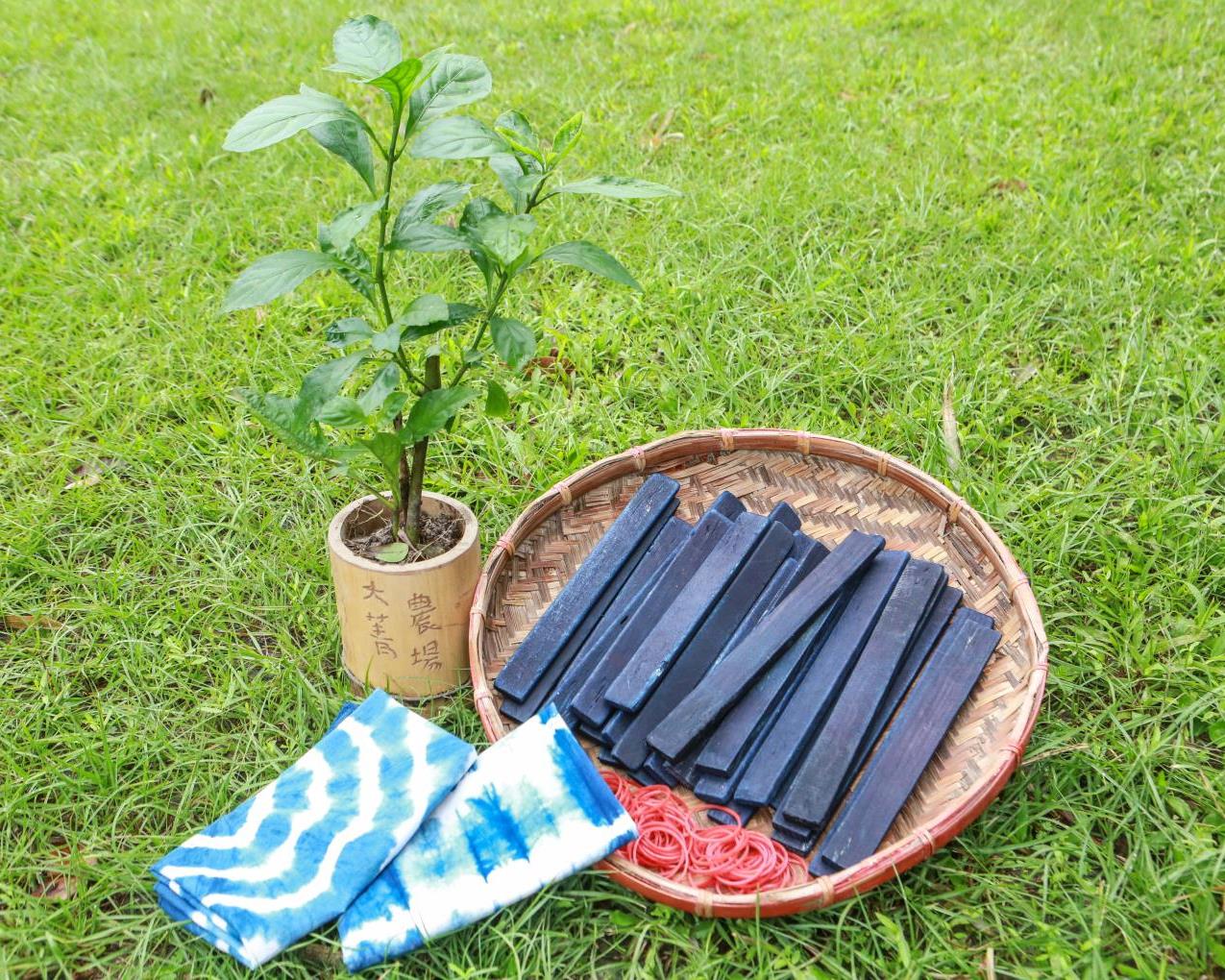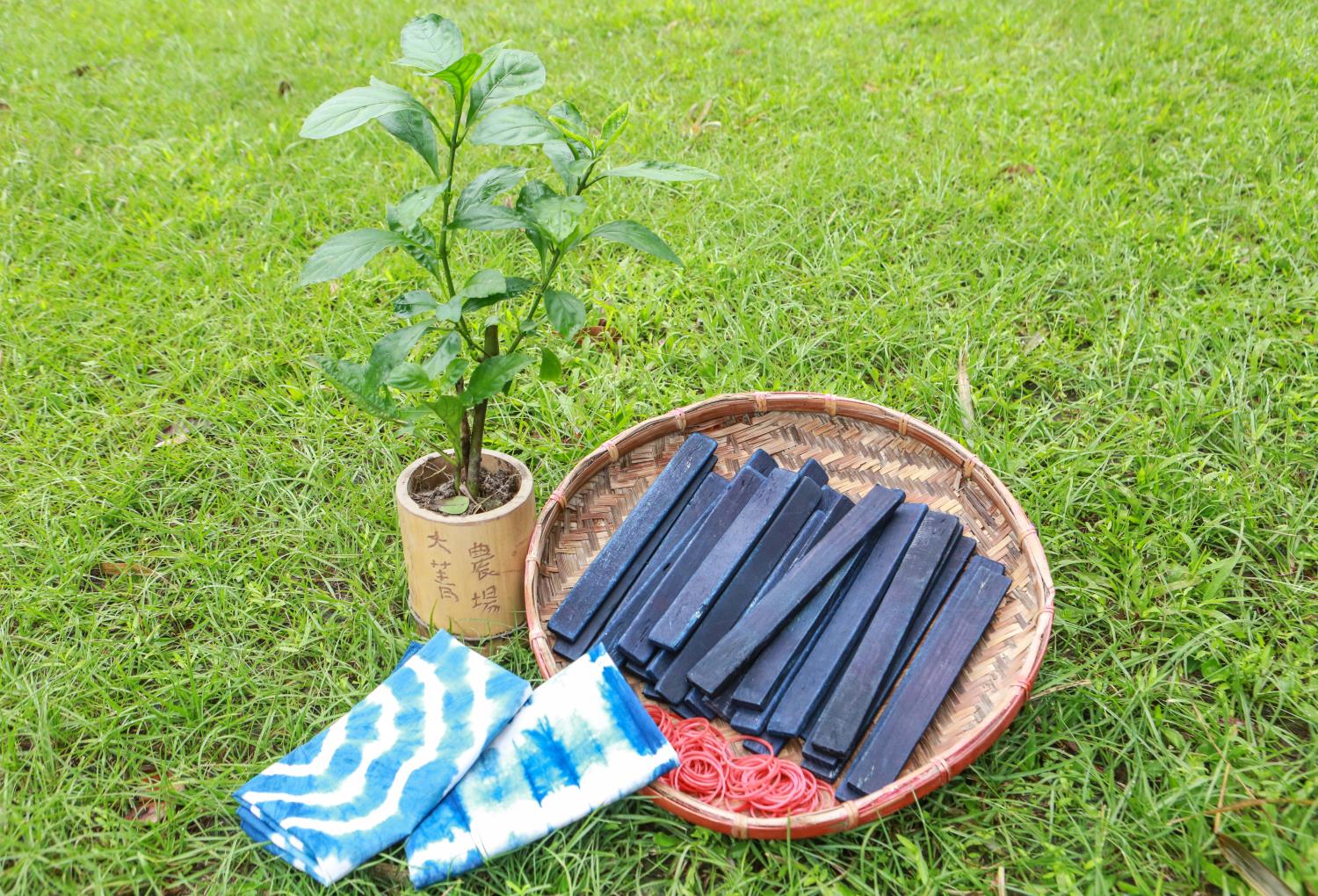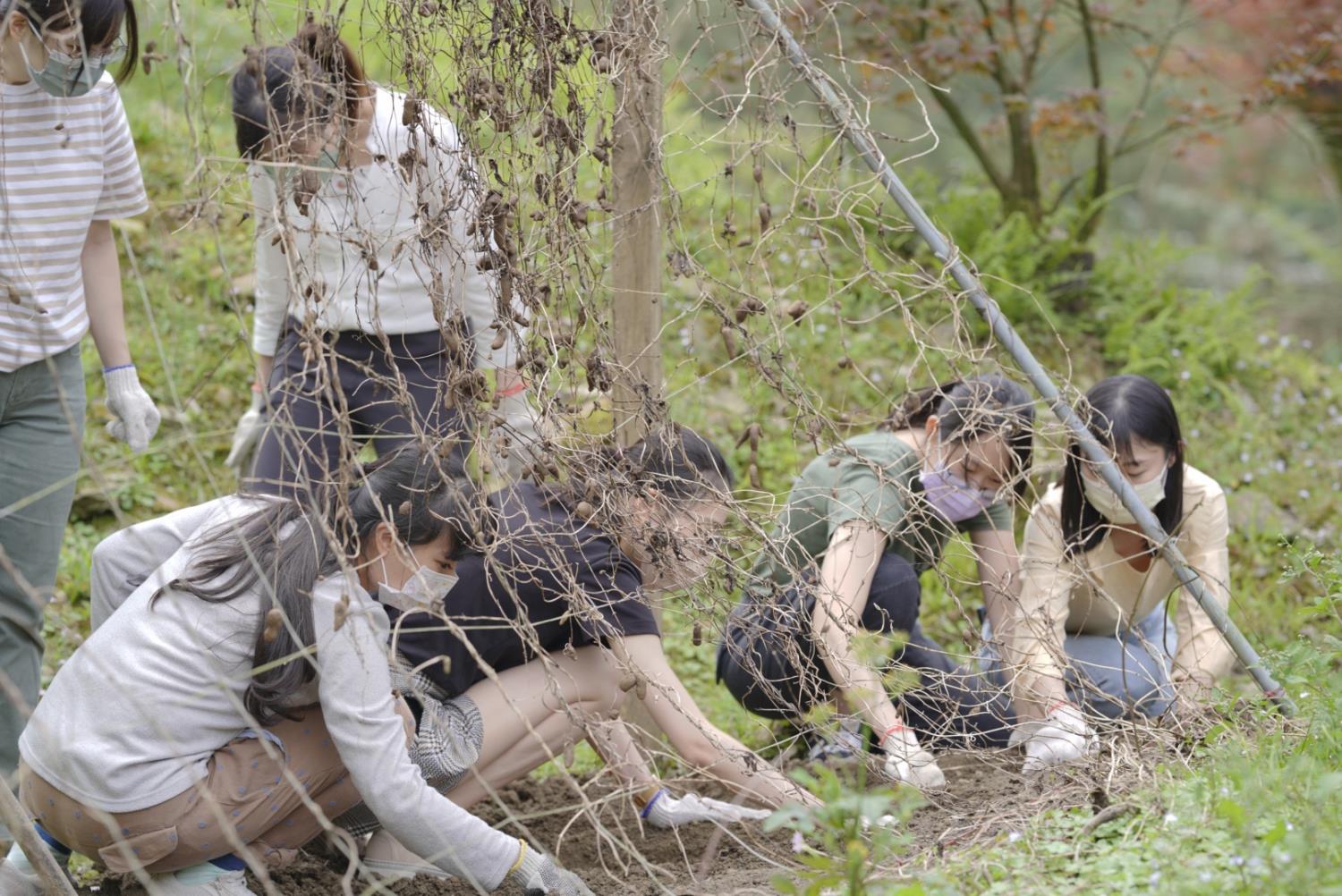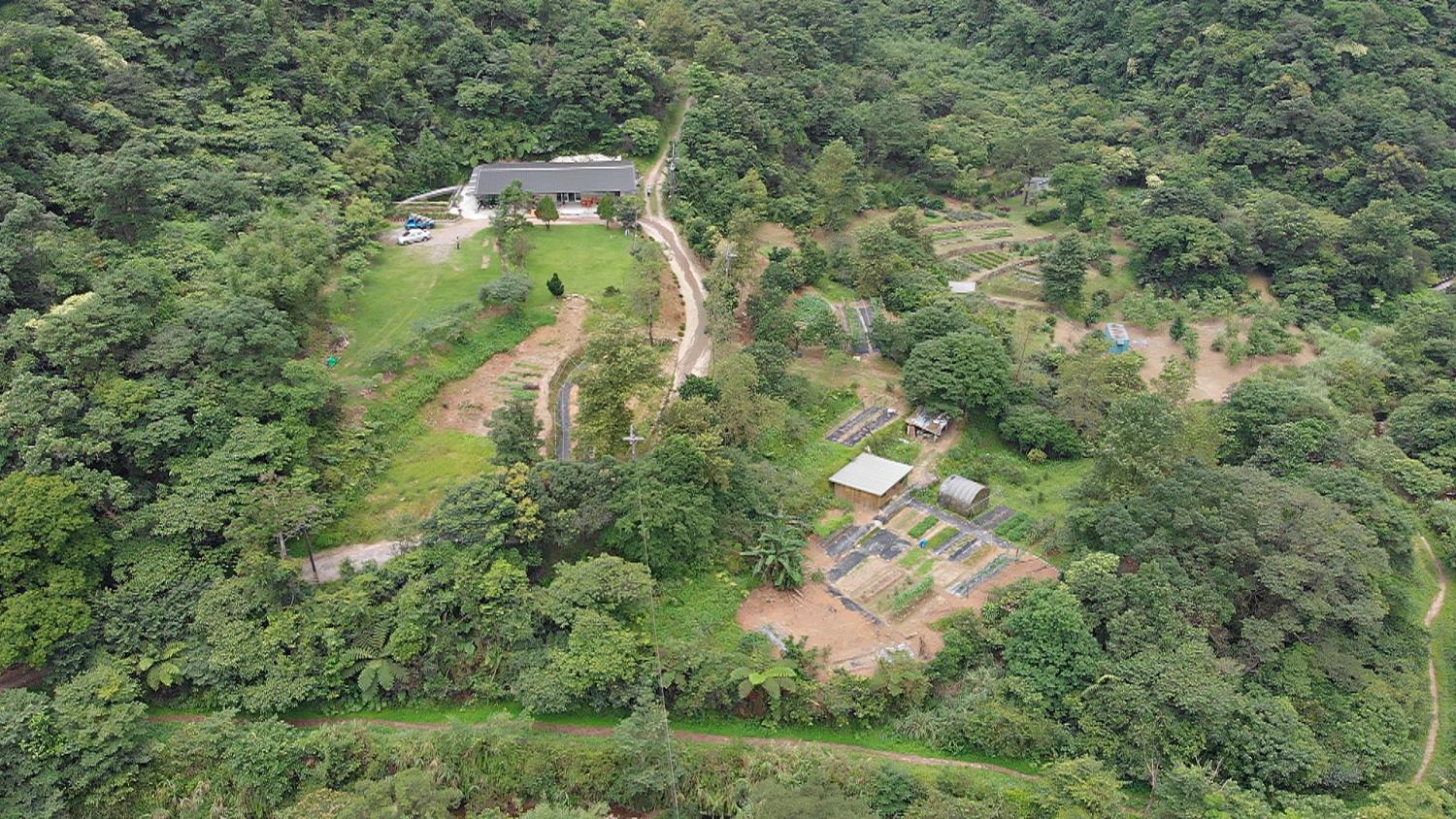
Home/Tag/
Reproduce the "Natural Blue Dyeing" Process to Reappear Nuannuan Blue Dyeing Glory
There is a base that fully preserves the traditional process of Taiwan blue dyeing production named "Dajing Recreational Farm" in Nuannuan Mountain Area of Keelung City. The Farm grows "Dajing (Mayflower glory berry)" which can extract the raw material for blue dyeing and reproduce the production process of blue-indigo dyes and fabric dyeing. It offers experiential activities of ancestors' "Natural Blue Dyeing" process to the visitors and be loved. The owner Mr. Wang Kuo-wei in his eighties, established "Keelung Traditional Arts and Culture Agricultural Association" inviting young people to operate and preserve the culture of the traditional industry.
The Popular Trend of Blue Dyeing Revives Dajing Blue Dyeing Industry
When talking about the reviving process of Dajing Blue Dyeing Industry, Mr. Wang, the Chairman of Keelung Traditional Arts and Culture Agricultural Association, said from the bottom with enthusiasm.
From 1830 to 1870, Nuannuan Mountain Area was a substantial production base of blue and indigo dyes in Taiwan. There were many "Dajing (Mayflower glory berry) Stores" around. Since the raw plant, "Dajing (Mayflower glory berry)", is well grown in the cold and moist weather of Nuannuan Mountain Area, the extracted blue dyes are exceptionally high quality and sold at high prices to central China for dyeing luxury silk fabrics.
After 1870, the coal mining industry in Keelung emerged. A large number of workers changed work to the mines, so the Dajing Blue Dyeing Industry declined. At that time, forest lands were worthless and then gradually taken by the government as public security forests. The mining industry, after decades of success and finally fell into despair. The residents wanted to restore the old blue dyeing industry but difficult because they lost the land.
Mr. Wang's father had purchased 3 hectares of terraced fields in the Nuannuan Mountain Area, which had been abandoned for a long time until Mr. Wang retired from the mining company to tidy them up gradually. He grown various crops but finally found that the climate could only plant Dajing (Mayflower glory berry) and tea leaves but had no techniques. In 2003, the National Taiwan Craft Research and Development Institute, famed for Blue Dyeing Art Research approached Mr. Wang to learn how to grow Dajing to develop the raw material source. It then became the dawn of the Dajing Blue Dyeing Industry revival in the Nuannuan Mountain Area.
The Ancient Method is The Best Market Segmentation
Soon, Mr. Wang gained experience and was invited to show his restoration results of the blue dyeing culture in several exhibitions. Which attracted lots of media reports, so he officially named the fields "Dajing Recreational Farm."
Dajing Recreational Farm has unique conditions to revive the Blue Dyeing Industry in Nuannuan Mountain Area—it has four historical Jing-Che Pools which are "three in circles and one in square" shapes made 200 years ago for "Natural Blue Dyeing". After the four Pools had been restored, they allowed people to experience the traditional blue-indigo dyes production and attracted many visitors.
However, Mr. Wang gained aged and cannot do much farming. In addition, several typhoons struck the farm, causing it to a dormant state. In 2019, several young people living in Keelung came to learn blue dyeing and were enthusiastic about it. After discussing with the young people, Mr. Wang decided to establish Keelung Traditional Arts and Culture Agricultural Association to promote social welfare and youth employment. With the free spaces provided by Dajing Recreational Farm, the Association brought in young people to pass on the culture of traditional industry.
Ms. Huang Xue-e is one of the young people. She was an accountant who came to learn about blue dying after seeing the media reports and fell in love with Dajing Blue Dyeing.
"I didn't expect that blue dyeing is highly knowledgeable after involved in, which is not easy to realize the vast knowledge behind it in a few days." Ms. Huang said. The ancient method is the best Marketing Segmentation. The Blue Dyeing market in Taiwan is hot now; however, most workshops and companies focus on researching and developing techniques. Keelung Traditional Arts and Culture Agricultural Association has strengths in Dajing plantation, traditional Jing-Che Pools blue-indigo dyes production, and the ecological environment of the production site, making our market segmentation clear.
Use Three Circles, One Square Jing-Che Pools to Experience The "Natural Blue Dyeing"
In 2019, Keelung Traditional Arts and Culture Agricultural Association joined Social Type Multi-Employment Promotion Program (MEPP) of the Ministry of Labor. The Ministry of Labor subsidized one project manager and three employees, with Mr. Wang, the unpaid Chairman. The five people started the revival way of the Blue Dyeing Industry and culture in Nuannuan District.
To care for both cultural heritage and create revenue, the Association develops various experiential activities and blue-dyed products. First, to enrich the experiential tour, the Association developed many travel attractions around Nuannuan Area, from Laoliaokeng Mining Park, the Middle Trail of Tamsui-Kavalan (Danlan) Trails, to Nuandong Valley Tail, hoping the diversified attractions could attract more tourists. What most touched Mr. Wang is in 2021, more than 40 volunteers came to Nuannuan from all over Taiwan to repair Nuan Dong Trail. During the construction period, the volunteers bunked down at the Association, and the Association provided food to them. The cooperation and unity atmosphere were particularly heartwarming.
Dajing can be planted by simply sticking a branch, and growing up in half a year, so farming is not difficult. However, the best temperature for "Natural Blue Dyeing" is 25 Celsius, so only April to May and September to October are suitable for blue-indigo dyes production in Nuannuan Area. The Association also promotes experiential activities during those seasons.
"The main theme of the experiential activities is Blue Dyeing Production, and it provides 30 people in a group to learn the ancient method of "Natural Blue Dyeing"." Mr. Wang expressed, it takes three days to do the so-called "Natural Blue Dyeing." From harvesting Dajing leaves and soaking them in Jing-Che Pools for two to three days to allow the pigment fully released. Then extracted the corroded leaves and add lime power, stirred continuously, and precipitated for a day. On the next day, the wastewater will be extracted from the top and finally extracted the blue-indigo dyes in mud paste.
Since the Association has "three shaped in circles and one shaped in the square" Jing-Che Pools. Every day, the Association could use one circle pool for soaking and another square pool for precipitating simultaneously. The three circular pools are soaking the leaves in turn continuously so that the work is not interrupted day by day. In the early years, if the productivity was full, 300 Taiwanese kgs (tkgs) of leaves (=180 kgs) were harvested daily to make 36 tkgs (=21.6 kgs) of Blue-indigo Dyes; For every 1 tkg of blue-indigo dye only could dye 1.5 tkg of fabrics, so it was quite precious.
Dajing Diversified Business Opportunities Expected Value-added Market
Except for experiential activities, Keelung Traditional Arts and Culture Agricultural Association also develops traditional dyeing teaching such as Clip, Tie, Sewing, Batik, and Scraping dyeing. Handmade cultural and creative goods such as blue-dyed garments, bags, scarves, and accessories, are sold to the passengers who visit Tamsui-Kavalan (Danlan) Trails.
In addition, the botanical components of Dajing can extract Chinese herbal medicines such as Indirubin and Nan Banlangen (Baphicacanthus Root) after scientific methods. The Association is cooperating with Ching-Kuo Institute of Management and Health for the related products and expects to launch in the fourth quarter of 2022.
Since 2020, the COVID-19 pandemic stroked the world and decreased the number of tourists in Nuannuan Mountain Area and the Association. However, the Association is still optimistic about the future, training the staff to improve dyeing skills, attraction guidance, and hosting activities. In leisure, the Association also assists the elderly in planting crops to enhance community cohesion.
Currently, many community associations in Taiwan are facing the challenges of aging populations, and the local culture is disappearing as the elderly group fades. If the elderly workforce can be guided appropriately, more local potential can be developed. The Association knew it cannot keep relying on government subsidies in the future, so it is working hard toward self-sufficiency and about in two to three years as self-sustainable.
"I am 82 years old and hope the history and culture of blue dyeing can be passed on in Keelung Mountains", Mr. Wang said. He expects the young staff of the Association will gradually take over the duties and achieve the goal of sustainable operation!
Keelung Traditional Arts and Culture Agricultural Association Facebook Page
Jing-Che Pool
"Che" means a "Hole Pool" and mostly builds at the water source of a mountain valley, with stones stacked to form a round or square-shaped pool. It divides into the upper soaking pool (soaking Dajing) and the lower sedimentation pool (for the blue liquid sedimentation), and the two are connected by an orifice.
There is a Taiwanese proverb that "Foolish people do foolish things". Many craft inheritance, community welfare, and social innovation cannot be profitable or achieve the goal in a short time. So, they need foolish men to keep doing and gradually make them come true to pass on the culture and upgrade the industry.
~Mr. Wang Kuo-wei, Chairman of Keelung Traditional Arts and Culture Agricultural Association

▲The strips of blue-indigo dye must undergo a complex "Natural Blue Dyeing" process

▲The Association's experiential activities attract people who are interested in blue dyeing

▲From the aerial view of Keelung Traditional Arts and Culture Agricultural Association, the blue dyeing tradition is in it and waits for people to experience (Pictures provide: Keelung Traditional Arts and Culture Agricultural Association)
Case Story: Multi-employment Promotion Program
Interviewee: Keelung Traditional Arts and Culture Agricultural Association
![]()
This work is licensed under a Creative Commons Attribution-NoDerivatives 4.0 International License.
Please attribute this article to “Workforce Development Agency, Ministry of Labor.”
